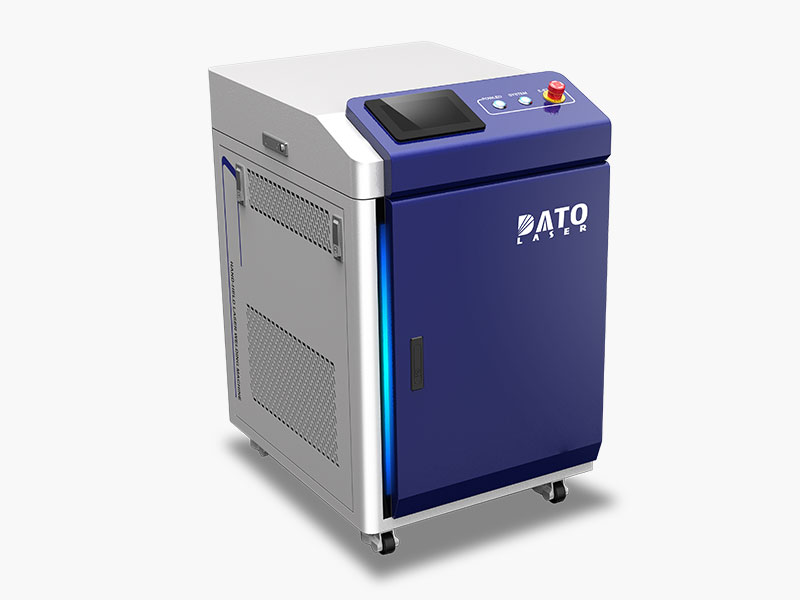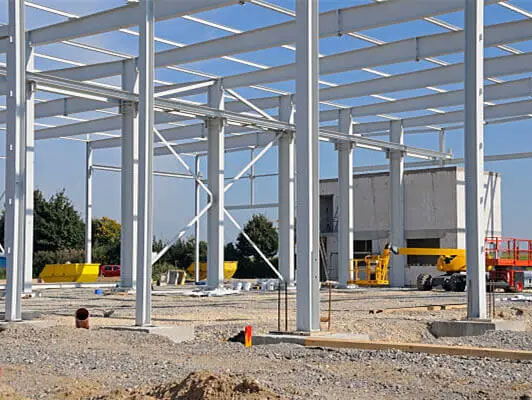Automated vs Manual Laser Welding: Productivity Comparison

In the fast-paced world of modern manufacturing, laser welding has emerged as a cornerstone technology for industries ranging from automotive and aerospace to medical device production. As companies strive to balance precision, speed, and cost-effectiveness, the choice between automated laser welding systems and manual laser welding techniques becomes critical. Both methods offer distinct advantages, but understanding their differences in productivity, accuracy, and application suitability is essential for optimizing workflows and maximizing return on investment.
This comprehensive guide explores the productivity comparison between automated and manual laser welding, delving into their operational efficiencies, use cases, and long-term value propositions. Whether you’re a manufacturing manager evaluating production upgrades or an engineer seeking insights into laser welding innovations, this analysis will equip you with the knowledge to make informed decisions for your business.
Understanding Laser Welding: A Brief Overview
Before diving into the automated vs manual debate, it’s important to establish a foundational understanding of laser welding itself. Laser welding uses a highly focused beam of light to melt and fuse materials, creating strong, precise joints with minimal heat-affected zones. This method is ideal for working with metals like steel, aluminum, titanium, and even dissimilar metals that are challenging to weld using traditional methods.
The two primary modes of operation—automated and manual—determine how the laser beam is guided and applied. Let’s explore each in detail.
Automated Laser Welding: Speed, Consistency, and Scalability
Automated laser welding systems rely on programmable robotics or computer numerical control (CNC) to execute welds with minimal human intervention. These systems are widely adopted in high-volume manufacturing environments where repeatability and speed are paramount.
Key Advantages of Automated Laser Welding
Enhanced Productivity Through Speed
Automated systems operate at significantly faster speeds than manual methods. Robots can perform continuous welds without fatigue, achieving cycle times that are up to 3–5 times faster than manual operations. For industries like automotive manufacturing, where thousands of identical components are welded daily, this speed translates into dramatic productivity gains.Unmatched Consistency and Precision
Human welders, no matter how skilled, are prone to minor inconsistencies due to hand tremors, fatigue, or variations in technique. Automated systems eliminate these variables by following pre-programmed paths with micron-level accuracy. This consistency is critical for applications requiring airtight seals, such as medical implants or aerospace components.Reduced Material Waste and Rework
The precision of automated welding minimizes errors like porosity, undercutting, or incomplete fusion. Fewer defects mean less material waste and lower costs associated with reworking faulty parts.
Limitations of Automated Laser Welding
While automation excels in high-volume scenarios, it has limitations:
High Initial Investment: Setting up robotic workcells requires significant capital for equipment, programming, and integration.
Inflexibility for Custom Jobs: Reprogramming robots for small batches or unique designs can be time-consuming, making manual welding more practical for prototyping or custom projects.
Limited Adaptability to Complex Geometries: Some automated systems struggle with highly irregular shapes or hard-to-reach joints that require human dexterity.
Manual Laser Welding: Flexibility and Artisan Precision
Manual laser welding places control in the hands of skilled operators, who guide the laser beam using handheld tools or stationary setups. This approach is favored for low-volume production, repair work, and applications demanding artistic craftsmanship.
Key Advantages of Manual Laser Welding
Adaptability to Complex and Custom Designs
Skilled welders can adjust their technique on the fly to accommodate intricate geometries, varying material thicknesses, or delicate components. This flexibility makes manual welding ideal for custom jewelry manufacturing, heritage restoration, or prototyping.Lower Upfront Costs
Manual systems require less expensive equipment compared to automated setups, making them accessible for small workshops or businesses with limited budgets.Artisan-Level Precision in Specialized Applications
In industries like luxury watchmaking or microelectronics, the human touch ensures meticulous attention to detail. Operators can visually inspect welds in real time and make micro-adjustments to achieve flawless results.Ease of Implementation for Small Batches
For manufacturers producing limited quantities of diverse products, manual welding avoids the downtime associated with reprogramming robots.
Limitations of Manual Laser Welding
Slower Production Rates: Human operators cannot match the speed of robots, especially for large-scale projects.
Higher Risk of Human Error: Even experienced welders may produce inconsistencies over long shifts.
Physical Strain on Operators: Prolonged use of handheld laser tools can lead to ergonomic challenges.
Productivity Showdown: Where Each Method Excels
To determine whether automated or manual laser welding is more productive, consider the following factors:
1. Production Volume and Batch Sizes
Automated Systems: Dominant in high-volume manufacturing (e.g., automotive parts, consumer electronics). A single robotic workcell can produce thousands of identical welds per day with near-zero variance.
Manual Systems: Better suited for small batches, one-off projects, or industries where customization trumps speed (e.g., architectural metalwork).
2. Material Compatibility and Joint Complexity
Automated Systems: Excel with standardized materials (e.g., sheet metal, tubes) and repetitive joint types (e.g., butt welds, lap joints).
Manual Systems: Handle dissimilar metals, curved surfaces, and multi-axis joints more effectively.
3. Labor Costs and Workforce Skills
Automated Systems: Reduce reliance on highly skilled labor but require technicians for programming and maintenance.
Manual Systems: Depend on experienced welders, which can increase labor costs and training time.
4. Long-Term ROI and Scalability
Automated Systems: Higher upfront costs are offset by long-term savings in labor, waste reduction, and scalability.
Manual Systems: Lower initial investment but may become cost-prohibitive as production scales.
Choosing the Right System: DATO’s Expertise in Laser Solutions
At DATO and Leapion, we understand that there’s no one-size-fits-all answer to the automated vs manual debate. Our fiber laser welding machines are engineered to bridge this gap, offering hybrid solutions that combine automation’s efficiency with manual flexibility.
For example, our Leapion LWS Series features:
Modular Robotic Arms: Easily reprogrammable for diverse tasks.
Ergonomic Manual Interfaces: Enable operators to switch between automated and manual modes.
AI-Powered Quality Control: Real-time defect detection for both methods.
By analyzing your production goals, material types, and budget, our team can recommend a system that maximizes productivity without compromising quality.
Frequently Asked Questions
Q: Can automated laser welding handle delicate materials like thin-gauge stainless steel?
A: Yes. Modern systems like DATO’s Fiber Laser Welders use adaptive beam control to prevent burn-through, even on materials as thin as 0.1mm.
Q: How do I calculate ROI for an automated laser welding system?
A: Consider factors like labor cost savings, reduced scrap rates, and increased throughput. DATO’s ROI calculators provide customized estimates based on your production metrics.
Conclusion: Balancing Efficiency and Craftsmanship
The choice between automated and manual laser welding hinges on your specific operational needs. Automated systems deliver unmatched speed and consistency for high-volume manufacturing, while manual methods offer unparalleled flexibility for custom and complex projects.
As leaders in laser technology innovation, DATO and Leapion are committed to providing solutions that adapt to your evolving demands. Explore our range of laser welding machines and discover how our expertise can elevate your productivity, precision, and profitability.
Ready to Transform Your Welding Workflow?
Contact DATO’s engineering team today for a personalized consultation or request a live demo of our cutting-edge laser welding systems. Let us help you weld the future, one precise seam at a time.
Related Blogs
-
 Exploring the Safety, Precision, and Industrial Benefits of Laser Surface CleaningIn today’s fast-paced industrial world, where quality, efficiency, and sustainability are top priorities, manufacturers are constantly seeking better ways to clean metal surfaces without compromising material integrityBlog
Exploring the Safety, Precision, and Industrial Benefits of Laser Surface CleaningIn today’s fast-paced industrial world, where quality, efficiency, and sustainability are top priorities, manufacturers are constantly seeking better ways to clean metal surfaces without compromising material integrityBlog -
 A Complete Guide by DATO and LeapionIn modern industry, surface preparation and maintenance play a crucial role in achieving high-quality manufacturing results. Laser cleaning machines have emerged as one of the most innovative, efficient, and environmentally friendly tools for removing contaminantsBlog
A Complete Guide by DATO and LeapionIn modern industry, surface preparation and maintenance play a crucial role in achieving high-quality manufacturing results. Laser cleaning machines have emerged as one of the most innovative, efficient, and environmentally friendly tools for removing contaminantsBlog -
 Laser cleaning machines are revolutionizing industrial surface cleaning by offering a faster, safer, and more eco-friendly alternative to traditional methods. Whether removing rust, paint, oil, oxide, or other surface contaminants, laser cleaning has become a cutting-edge solution in manufacturing,Blog
Laser cleaning machines are revolutionizing industrial surface cleaning by offering a faster, safer, and more eco-friendly alternative to traditional methods. Whether removing rust, paint, oil, oxide, or other surface contaminants, laser cleaning has become a cutting-edge solution in manufacturing,Blog -
 Introduction: Transforming EV Battery Manufacturing Through Laser TechnologyThe electric vehicle revolution has accelerated dramatically over the past decade, bringing with it unprecedented challenges and opportunities in battery manufacturing. As global automakers commit billions to electrificationBlog
Introduction: Transforming EV Battery Manufacturing Through Laser TechnologyThe electric vehicle revolution has accelerated dramatically over the past decade, bringing with it unprecedented challenges and opportunities in battery manufacturing. As global automakers commit billions to electrificationBlog














